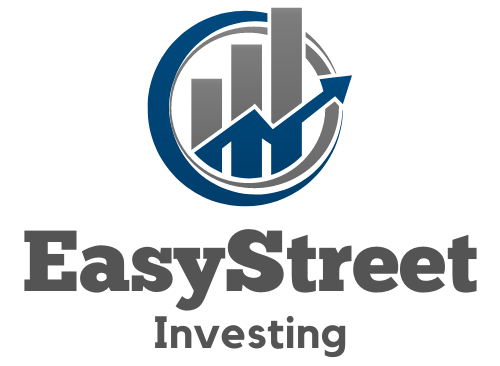Diving into the world of investments, high-yield municipal bonds stand out as a beacon for those seeking to boost their income without increasing their tax burden. Offering more than just a safe harbor in turbulent financial seas, these bonds provide investors with an intriguing option: earning tax-free income. As we unravel the intricacies of this investment vehicle, you’ll gain insights into how they work and why they might be a smart addition to your portfolio.
Now, let’s get down to brass tacks. If you’re tired of watching your returns get nibbled away by taxes, it’s time to consider municipal bonds with higher yields. Throughout our exploration, we’ll touch on the benefits and risks, giving you the lowdown on what makes them tick and how they could fit into your financial strategy. So buckle up! We’re about to embark on a journey that could potentially line your pockets with some extra cash, without Uncle Sam reaching in.
Important Highlights
1. High-yield municipal bonds offer investors the opportunity to earn tax-free income, primarily attractive to those in higher tax brackets seeking relief from federal and sometimes state taxes. By investing in these securities, individuals can potentially increase their after-tax returns compared to taxable bonds with similar risk profiles.
2. These bonds are typically issued by local governments and finance projects such as schools, highways, and hospitals, directly impacting community development. Investors not only benefit from a stream of income but also contribute to societal growth, adding a layer of social responsibility to their investment portfolios.
3. The term “high-yield” reflects the increased risk associated with these bonds when compared to other municipal bonds; they are often issued by entities with weaker credit ratings or by projects that are more speculative in nature. This risk is balanced by the possibility of higher returns, making thorough research and due diligence essential for potential investors.
4. Diversification within a portfolio is a key strategy for managing investment risk, and high-yield municipal bonds can play a significant role in this. They often show low correlation with other asset classes like stocks or government bonds, which means they can provide stability during market volatility.
5. While considering high-yield municipal bonds, it’s crucial for investors to evaluate factors such as the interest rate environment, economic conditions, and issuer-specific concerns. Professional financial advice may be necessary to navigate the complexities of the municipal bond market and to tailor an investment approach that aligns with individual financial goals and risk tolerance levels.
Understanding High-Yield Municipal Bonds
Municipal bonds, commonly referred to as muni bonds, are debt securities issued by state and local governments to finance public projects. High-yield municipal bonds are a special category, offering higher interest rates due to potentially increased risk. These bonds can provide tax-free income, making them an attractive investment for those in higher tax brackets seeking to minimize their tax liability.
Tax Advantages of High-Yield Municipal Bonds
The primary benefit of investing in high-yield municipal bonds is the tax-exempt status of the income they generate. Typically, the interest income from these bonds is exempt from federal income taxes and, in some cases, state and local taxes as well. This exemption can significantly enhance the effective yield for investors, especially when compared to taxable fixed-income investments.
Risks Associated with High-Yield Municipal Bonds
While the tax benefits are compelling, investors must also weigh the risks. High-yield municipal bonds often come with increased credit risk; this means there’s a higher chance that the issuer may default on payments. Furthermore, these securities may be more sensitive to changes in the market and economic downturns. Investors should meticulously assess the creditworthiness of the issuing municipality before committing funds.
Evaluating Bond Ratings and Research
Bond ratings from agencies like Moody’s or Standard & Poor’s serve as an essential guidepost for assessing risk levels. High-yield munis typically fall below investment-grade ratings but offer higher returns as compensation for elevated risk. Investors should perform diligent research or consult financial advisors to understand the specific factors influencing a bond’s rating.
Diversification Through Municipal Bond Funds
To mitigate some of the risks inherent in individual bond investments, many turn to municipal bond funds. These funds hold a diverse portfolio of muni bonds, spreading out exposure to potential defaults across various issuers and regions. By investing in a high-yield municipal bond fund, individuals gain access to professional management and diversification that can be challenging to achieve independently.
Liquidity Considerations in High-Yield Munis
Liquidity is another important factor when exploring high-yield municipal bonds. Though not as liquid as U.S. Treasuries, munis generally maintain a reasonably active secondary market. However, during times of financial stress or market volatility, finding buyers may become more difficult, potentially impacting pricing and ease of sale.
Maximizing Tax-Free Income Strategies
An investor’s tax bracket plays a crucial role in determining how beneficial tax-exempt interest is. High-income earners stand to gain most from these strategies as they avoid paying substantial amounts in federal—and possibly state—taxes on their investment returns.
Inflation Impact on High-Yield Municipal Bonds
Inflation can erode purchasing power and diminish real investment returns over time. Fixed-income securities like high-yield munis have fixed interest rates; thus inflation adjustments do not occur post-issue. When inflation rises, it is vital to consider this impact on your real return on investment.
Finding Opportunities in Market Fluctuations
Market fluctuations can create buying opportunities for astute investors in high-yield municipal bonds. During periods when bond prices dip due to broader market concerns or temporary liquidity crunches, yields rise inversely providing an entry point for those seeking higher income streams at a potentially lower cost.
Strategic Laddering for Income Stability
A laddered portfolio approach involves buying multiple bonds with staggered maturity dates which helps manage interest rate risk while ensuring a consistent flow of income over time. This strategy provides both stability and flexibility within a high-yield municipal bond portfolio.
Navigating Call Features and Early Redemption Risks
Some high-yield municipal bonds include call features allowing issuers to retire debt early under specific conditions. This can affect yield expectations if a bond is called before its maturity date. Investors should carefully examine call provisions when selecting high-yield munis to align their investment objectives with potential call risks.
- How do I assess the creditworthiness of municipal bond issuers?
- What strategies can I employ to balance risk and reward in my muni bond investments?
- Which tools or resources are most effective for monitoring market fluctuations affecting high-yield munis?
- In what ways does inflation impact my overall return on high-yield municipal bonds?
- Can you explain how laddering works within the context of municipal bond investing?
- What should I know about call features when purchasing high-yield municipal bonds?
Frequently Asked Questions
What are high-yield municipal bonds?
High-yield municipal bonds are debt securities issued by local governments or their agencies that offer higher interest rates compared to other munis. They’re often used to fund projects like schools and infrastructure.
Why are they tax-free?
The income from these bonds is exempt from federal taxes, and sometimes state and local taxes, as an incentive for investors to support public projects. This makes them attractive for those in higher tax brackets.
How do they compare to other investments?
Compared to taxable bonds, high-yield munis may provide a greater after-tax return. However, they can carry more risk than standard municipal bonds due to the higher yields.
What risks should I be aware of?
The risks include the possibility of default by the issuer and interest rate fluctuations. High-yield munis are also sensitive to economic downturns, which could affect their creditworthiness.
Can anyone invest in high-yield municipal bonds?
Absolutely. While they’re particularly beneficial for high-income earners looking for tax-free income, any investor can purchase them through various investment platforms.
How liquid are these investments?
Liquidity can vary. Some high-yield municipal bonds are easier to buy or sell than others, depending on market conditions and the bond’s rating.
What’s the minimum investment for high-yield munis?
This depends on the specific bond and the platform you use to invest. Some can be purchased with relatively small amounts, while others may require larger initial investments.
Should I consult a financial advisor before investing?
It’s always wise to seek professional advice when considering complex investments like high-yield munis, especially if you’re new to the market or unsure about risks.
How do I track the performance of my municipal bonds?
You can monitor them through your investment platform, financial news sources, or specialized bond-tracking websites that provide updates on ratings and market trends.
Are there any alternatives for tax-free income?
Certainly! Other options include traditional municipal bonds with lower yields and potentially lower risk profiles, or investing in tax-advantaged retirement accounts like Roth IRAs.
Closing Insights on Tax-Free High-Yield Bonds
In conclusion, exploring high-yield municipal bonds can be a smart move for those seeking tax-free income streams. It’s important to weigh the potential benefits against the risks involved. Diversifying your portfolio with these instruments could potentially enhance your returns while contributing to public good. However, staying informed and seeking expert advice will ensure your investment decisions align with your financial goals and risk tolerance.
Bonds of this nature are not one-size-fits-all solutions but rather tools that need careful consideration within your broader investment strategy. By keeping up-to-date with market changes and working with a trusted advisor, you can navigate the complexities of high-yield munis effectively while enjoying their fiscal benefits.

